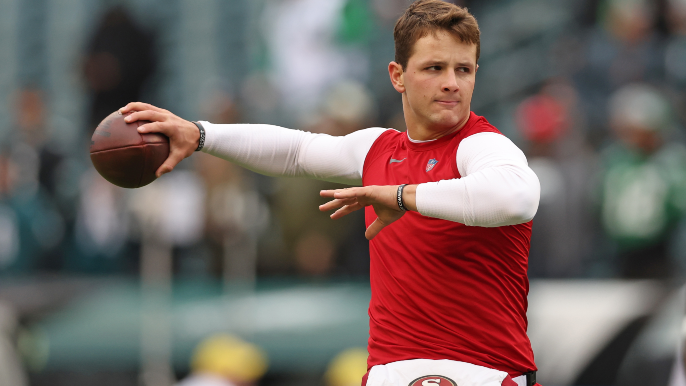
The Unforgiving Gauntlet: Navigating UCL Injury Replacement Rules
The UEFA Champions League, football’s premier club competition, is a stage where dreams are forged and shattered. It demands peak performance, tactical brilliance, and, crucially, a robust squad capable of enduring the grueling demands of European football. However, the beautiful game is also a brutal one, and injuries are an inevitable, often devastating, part of the equation. For clubs vying for the coveted trophy, a significant injury to a key player can derail an entire campaign, transforming a meticulously planned season into a desperate scramble.
It is in this challenging landscape that the UEFA Champions League (UCL) injury replacement rules come into sharp focus. Far from being a simple case of "player X is injured, so player Y comes in," these regulations are intricate, strictly enforced, and designed to balance sporting integrity with the harsh realities of player welfare and squad depth. This article delves deep into the nuances of these rules, exploring their rationale, their limitations, and the profound impact they have on clubs’ strategic planning and their pursuit of European glory.
The Foundation: UCL Squad Registration
Before understanding injury replacements, one must first grasp the fundamental principles of UCL squad registration. Each participating club must submit two lists of players to UEFA by specific deadlines:
-
List A: This is the primary squad, limited to a maximum of 25 players. Within these 25, at least eight places are reserved for "locally trained players" – players who have spent at least three full seasons or 36 months, between the age of 15 and 21, at their current club (club-trained) or another club within the same national association (association-trained). The initial deadline for List A submission is typically in early September for the group stage and then a revised list in early February for the knockout stages, coinciding with the winter transfer window.
-
List B: This list comprises young, eligible players born on or after 1 January 2002 (for the current season, this date changes annually) who have been eligible to play for the club for an uninterrupted period of two years since their 15th birthday. There is no limit to the number of players on List B, and they can be added or removed throughout the competition, provided the paperwork is submitted by midnight (CET) the day before a match.
Once List A is submitted, it is largely set in stone. This rigidity is precisely what makes injury replacement rules so critical and complex.
The General Principle: No Replacements After the Deadline
The overarching rule in the Champions League is that, once the registration deadline for a particular stage (group stage or knockout stage) has passed, clubs cannot register new players to replace injured ones. This principle underscores UEFA’s commitment to fairness and predictability, preventing clubs from constantly reshuffling their squads based on short-term needs or tactical advantages. It forces clubs to think ahead, build deep squads, and anticipate potential issues.
This strict approach means that if a player suffers a minor injury that keeps them out for a few weeks, or even a couple of months, but not for the entire duration of the competition, the club simply has to cope with a reduced squad. They cannot bring in an external replacement for such an injury.
The Crucial Exception: Long-Term Injuries
Despite the general rule, UEFA recognizes that catastrophic, long-term injuries can severely jeopardize a club’s ability to compete fairly. To address this, there is a specific, narrowly defined exception allowing for the replacement of a player who suffers a long-term illness or injury.
Key Conditions for Long-Term Injury Replacement:
-
Severity and Duration: The injury or illness must be so severe that it prevents the player from participating in football for a minimum period, typically at least 30 days from the date of the injury or diagnosis. This is not for a standard muscle strain or a short-term knock.
-
Medical Evidence: The club must provide comprehensive medical evidence to UEFA, including detailed reports, scans, and prognoses from their own medical staff. Crucially, UEFA reserves the right to have the player examined by an independent medical expert appointed by the organization to verify the severity and expected duration of the injury. This rigorous vetting process is designed to prevent clubs from exploiting the rule for tactical reasons or to bring in new players under false pretenses.
-
Timing of Application: The request for replacement must be made before the first match of the competition stage (group stage or knockout stage) where the replacement is intended to play, or in the case of a subsequent injury, as soon as possible after the injury occurs, but always before the player is definitively unable to participate. For the knockout stages, the deadline for new registrations (including injury replacements if applicable) is usually the end of the winter transfer window, typically February 2nd.
-
Replacement Player Eligibility:
- The replacement player must not have already been registered for another club in the UEFA Champions League or Europa League (or Europa Conference League) in the same season. This "cup-tied" rule is paramount to maintaining sporting integrity, preventing clubs from signing players who have already played for another team in a European competition and using them immediately.
- The replacement player must be eligible to be registered for the club under normal circumstances (e.g., not under a transfer ban, correctly registered with the national association).
- The replacement player does not have to fill the same position as the injured player. While common sense might dictate a like-for-like replacement, the rules do not explicitly mandate it. A club might replace an injured defender with a midfielder if that better suits their tactical needs given the rest of their squad.
-
One-for-One Replacement: A club can only replace one injured player with one new player. They cannot replace multiple injured players simultaneously with a single application, nor can they replace one injured player with multiple new players.
-
Irreversible Decision: Once a player has been replaced due to a long-term injury, they cannot be re-registered for the current Champions League season, even if they recover sooner than expected. This is a critical point that clubs must consider carefully before making the decision to replace. It means if a player recovers quickly, the club might have "wasted" a replacement slot and lost access to that player for the remainder of the campaign.
The Goalkeeper Exception: A Special Case
Goalkeepers are a unique position in football, and UEFA regulations often reflect this. The rules for goalkeeper injury replacements are slightly more lenient due to the critical nature of the position and the limited number of goalkeepers typically carried in a matchday squad.
If a club has fewer than two goalkeepers available from their List A (i.e., one is injured and the other is the only fit option, or both are injured), they can register a new goalkeeper at any time during the competition. This rule is designed to ensure that clubs can always field a competitive team and are not unfairly disadvantaged by a lack of available goalkeepers. The replacement goalkeeper must still meet the general eligibility criteria (not cup-tied, etc.). This flexibility acknowledges the unique vulnerability clubs face if their goalkeeper options are depleted.
Strategic Implications for Clubs
The strictness and specific nature of UCL injury replacement rules profoundly influence how clubs manage their squads:
- Squad Depth is Paramount: Clubs must build squads with significant depth across all positions, knowing that injuries are inevitable and replacements are highly restricted. This often means investing in quality backups or relying heavily on academy graduates.
- Youth Academy Importance: List B players become incredibly valuable. These young talents can be brought into the squad at short notice, providing crucial depth without counting against the limited List A slots or requiring complex injury replacement procedures. Many top clubs intentionally develop their youth systems to feed players into their senior squad for this very reason.
- Medical Staff and Due Diligence: The role of the medical department is amplified. Accurate diagnoses and prognoses are essential, not just for player recovery but also for navigating UEFA’s strict requirements for injury replacement applications. Clubs need to be prepared to present compelling medical evidence.
- Risk Assessment: Coaches and sporting directors must constantly assess the risk of injury to key players. Do they rotate more frequently? Do they manage player loads more carefully? These decisions are directly influenced by the knowledge that a severe injury could leave a gaping hole in their squad.
- Winter Transfer Window Strategy: The winter transfer window (before the knockout stage deadline) becomes a critical period. Clubs can register up to three new players (who meet eligibility criteria, including not being cup-tied) for List A. This is often the primary mechanism for strengthening a squad or addressing deficiencies, including those caused by injuries that might not qualify for the specific "long-term injury replacement" rule.
Debates and Criticisms
While designed to ensure fairness, the UCL injury replacement rules are not without their critics and raise several debates:
- The 30-Day Threshold: Is 30 days sufficient for a "long-term" injury? Some argue that a player out for 6-8 weeks is still a significant loss, but might not meet the strict criteria, leaving clubs disadvantaged.
- Timing of Injury: An injury sustained just hours after the List A deadline, even if it’s career-threatening, might be treated differently than one sustained before, highlighting the harshness of the cut-off dates.
- Tactical vs. Genuine Need: While UEFA’s medical vetting aims to prevent abuse, some argue that clubs might still try to "manage" an injury’s prognosis to fit the criteria, or that the rules don’t fully account for the unique tactical needs a specific player might fulfill.
- Fairness to Smaller Clubs: Larger clubs with vast financial resources can afford deeper squads, making them more resilient to injuries than smaller clubs with more limited options. The strict replacement rules can exacerbate this disparity.
Conclusion: A Balancing Act
The UEFA Champions League injury replacement rules represent a careful balancing act. On one hand, they aim to maintain the integrity of the competition by ensuring squad stability and preventing constant, opportunistic roster changes. On the other hand, they acknowledge the unavoidable reality of injuries and provide a limited safety net for clubs facing catastrophic personnel losses.
For clubs, these rules are not merely bureaucratic hurdles but fundamental parameters shaping their squad planning, medical strategies, and overall approach to European competition. Success in the Champions League demands not only tactical genius and player brilliance but also the foresight to build a resilient squad capable of weathering the storm of injuries within the unforgiving confines of UEFA’s meticulously crafted regulations. As the competition evolves, it remains to be seen if these rules will adapt further to the ever-increasing physical demands placed on modern footballers, but for now, navigating this complex regulatory landscape remains a crucial component of any club’s quest for European supremacy.



